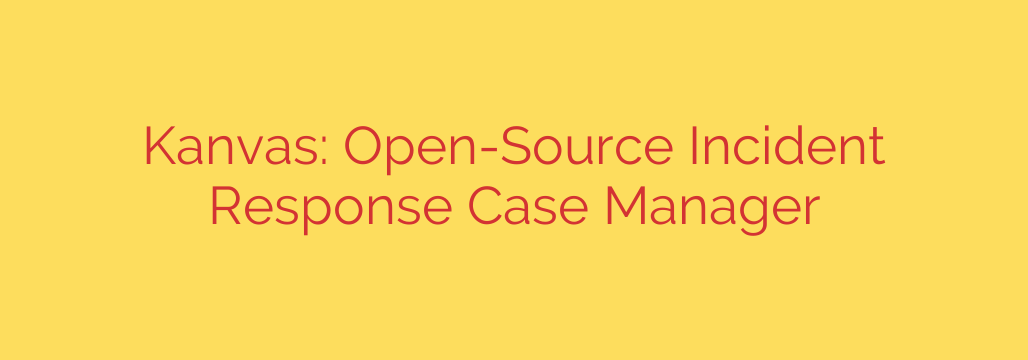
Streamlining Cybersecurity Incidents: The Power of Dedicated Case Management
In the face of relentless cyber threats, security teams are constantly challenged to respond swiftly and effectively to incidents. The chaotic nature of a security breach can quickly overwhelm manual processes, leading to missed steps, poor communication, and ultimately, slower recovery times. Managing these complex events requires more than just technical expertise; it demands a structured approach to track, investigate, and resolve each incident. This is where dedicated incident response case management tools prove invaluable.
Traditional methods often involve a patchwork of spreadsheets, emails, and chat messages – a system prone to errors, information silos, and difficulty in tracking progress or maintaining a clear audit trail. A purpose-built incident response case manager provides a centralized platform to bring order to the chaos.
One such solution gaining attention is Kanvas, an open-source incident response case manager designed to provide structure and efficiency to security operations. Tools like Kanvas offer a unified space where teams can effectively handle the lifecycle of a security incident from initial alert through containment, eradication, recovery, and post-incident analysis.
Key capabilities that make a tool like Kanvas essential for modern security teams include:
- Centralized Case Tracking: Every detail related to an incident, from initial observations and affected systems to ongoing actions and findings, is consolidated in one secure location. This ensures everyone involved has access to the latest, most accurate information.
- Structured Workflows: Incident response follows a general process. Case managers help enforce predefined stages and tasks, ensuring critical steps are not overlooked and promoting consistency across different incidents.
- Task Assignment and Collaboration: Clearly define roles, assign specific tasks to team members, and track progress in real-time. This improves accountability and facilitates seamless collaboration, especially crucial during high-pressure situations.
- Evidence Management: Securely store and link all relevant artifacts, logs, screenshots, and documentation directly to the case. Maintaining a clean chain of custody for evidence is vital for investigations and potential legal proceedings.
- Reporting and Analytics: Generate reports on incident trends, response times, and resource allocation. Analyzing past incidents provides valuable insights to improve future response strategies and proactive security measures.
- Open-Source Flexibility: Being open-source means tools like Kanvas can often be customized to fit specific organizational needs and integrated with existing security tools, offering greater control and transparency.
Implementing a dedicated case management system like Kanvas fundamentally changes how security teams operate during an incident. It transforms a potentially disorganized scramble into a coordinated, trackable, and auditable process.
Actionable Tip: Don’t wait for a major incident to consider implementing structured case management. Integrate it into your incident response plan now. Practice using the tool during tabletop exercises and drills to ensure your team is proficient when a real event occurs. Consistent documentation within the case manager is also paramount for effective post-incident review and continuous improvement.
By providing a clear framework for investigation, collaboration, and documentation, tools like Kanvas empower security teams to respond more efficiently, mitigate damage effectively, and learn valuable lessons from every incident, ultimately strengthening an organization’s overall security posture.
Source: https://www.helpnetsecurity.com/2025/07/09/kanvas-open-source-incident-response-case-management-tool/








